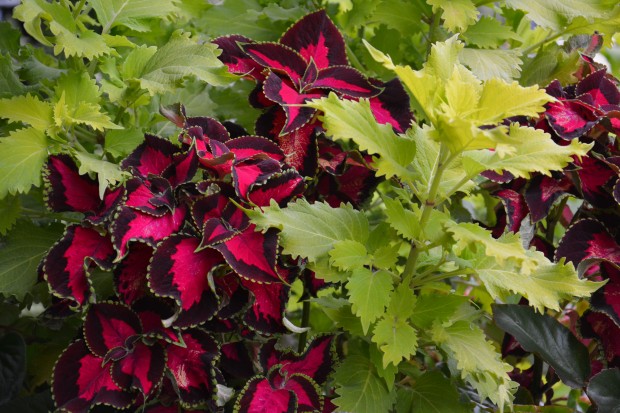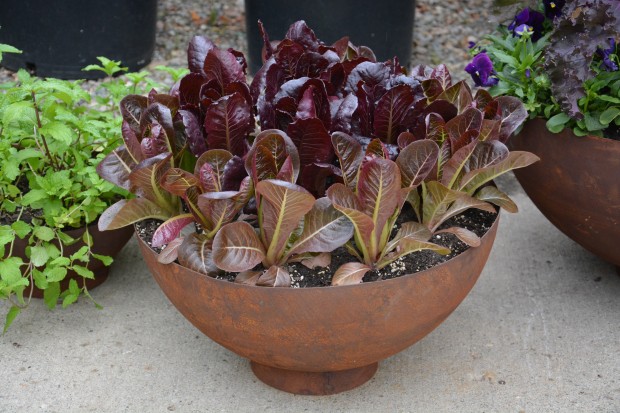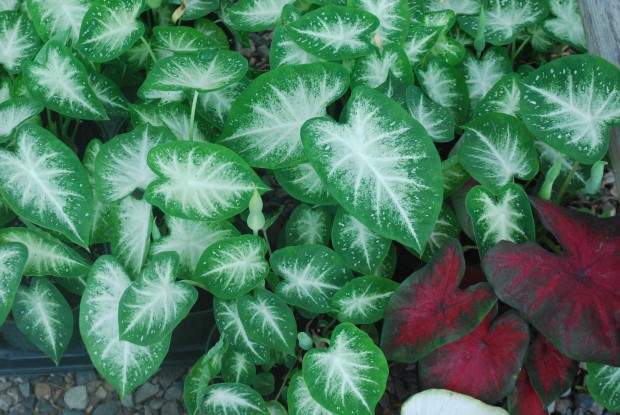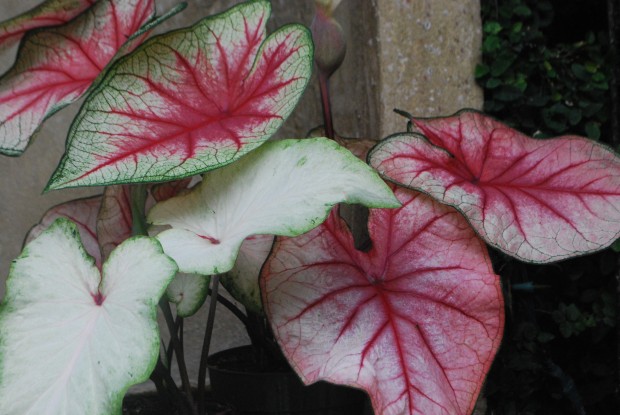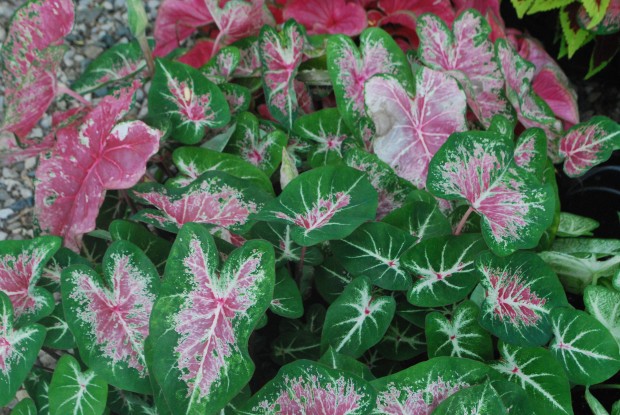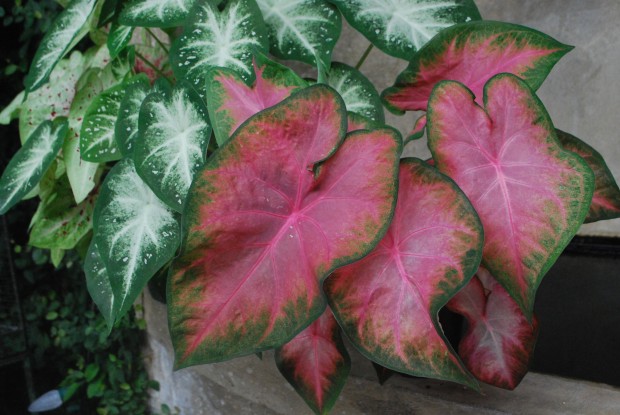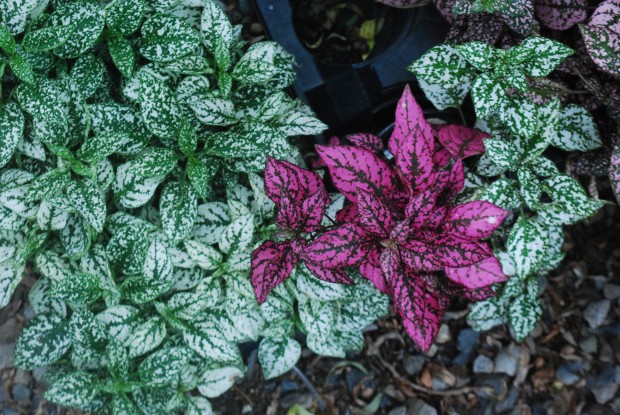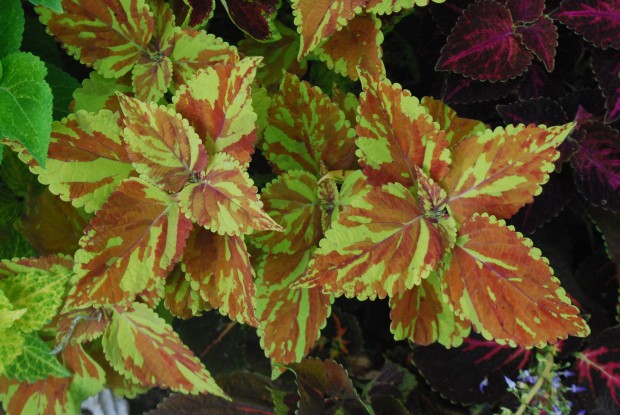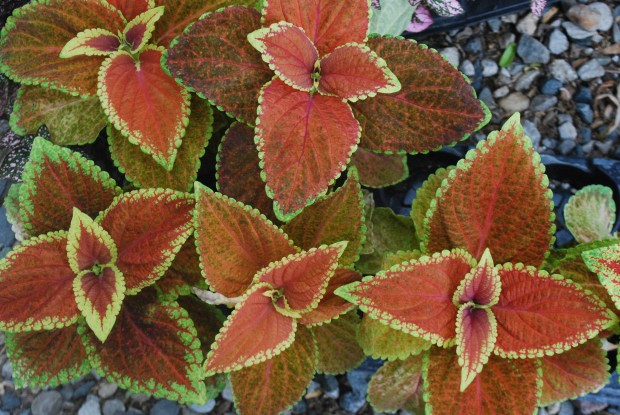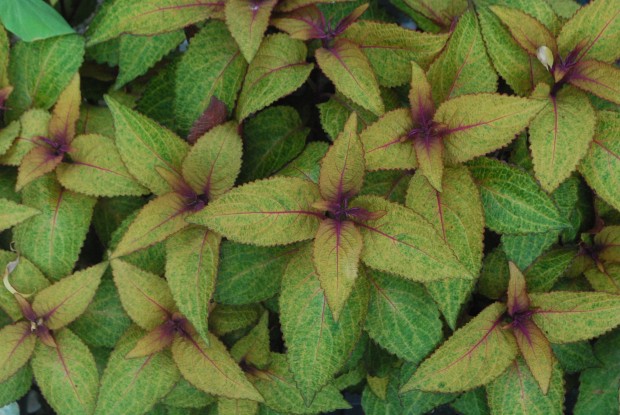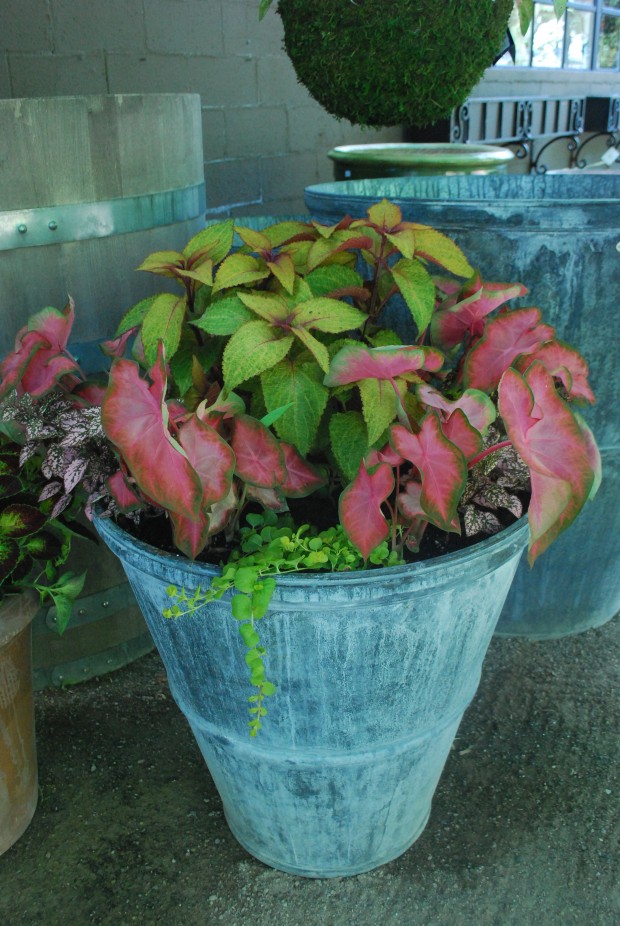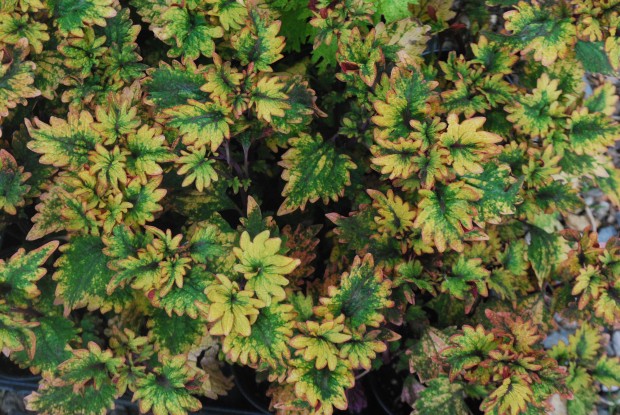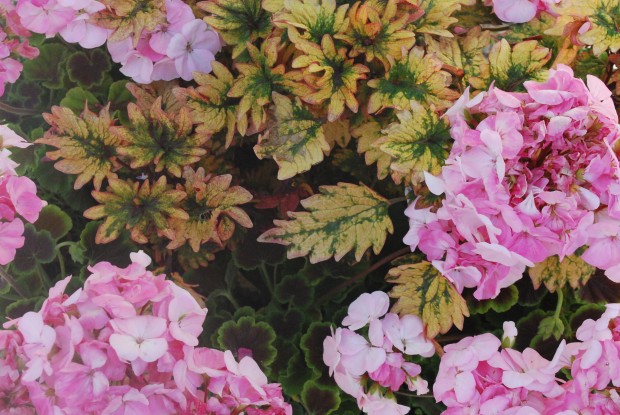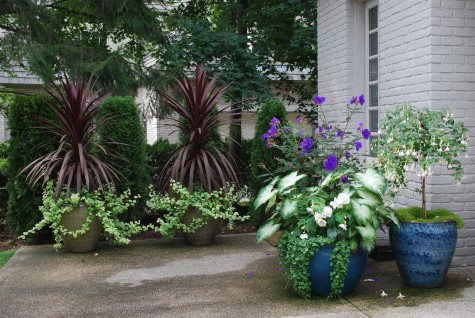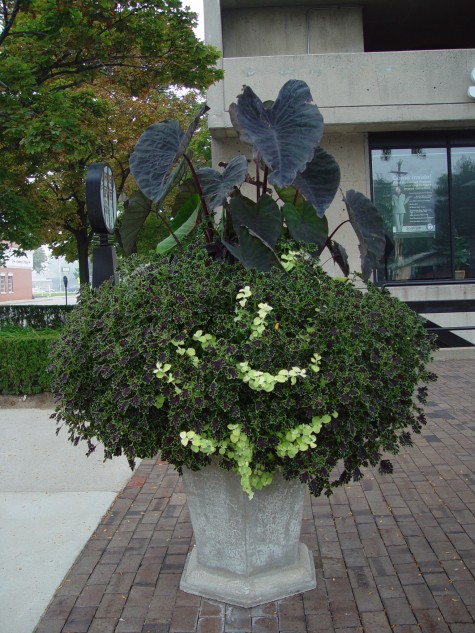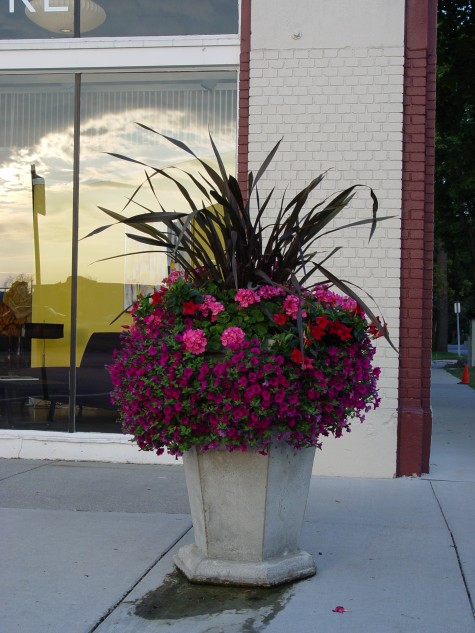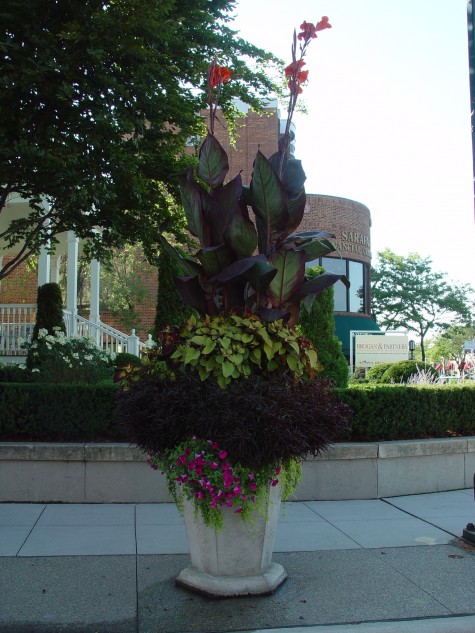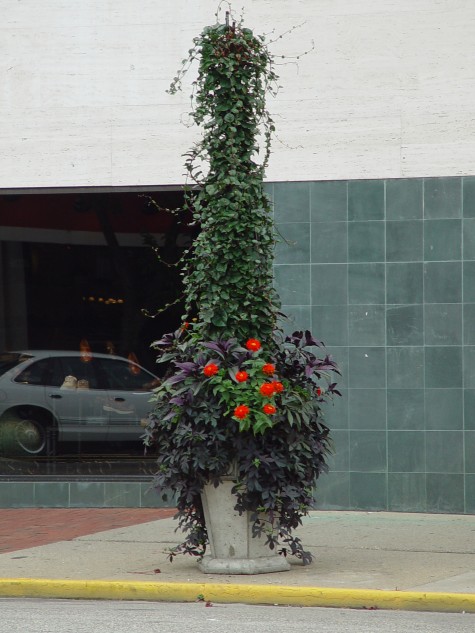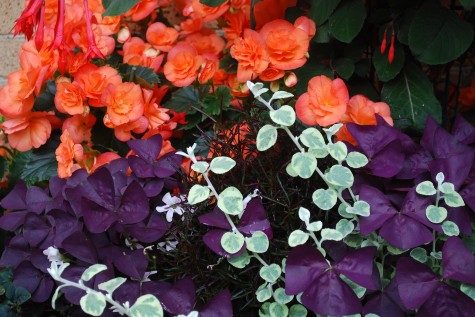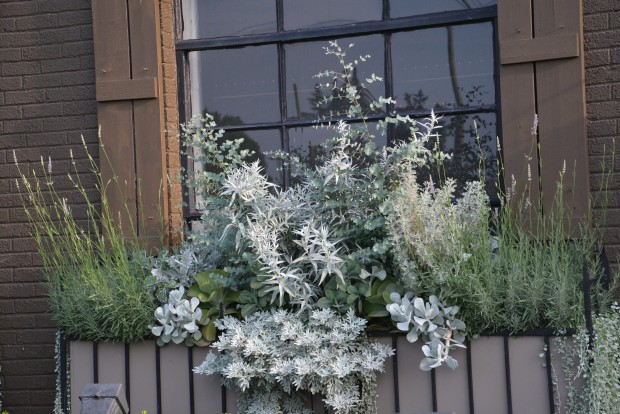 More than once have I had reason to expect that the warm and sunny momentum established by my summer season would blast by Labor Day in a hot fit of defiance. Given that the forecast for today is 90 degrees, might Mother Nature forget that today is Labor Day? Every year I hope nature will be distracted by some warm September weather, and fail to note that the season is due to change. Have my hopes of a summer that streams on for 4 months instead of 3 ever been fulfilled? No. This bout of hot weather aside, there are signs that the summer season is slowing.
More than once have I had reason to expect that the warm and sunny momentum established by my summer season would blast by Labor Day in a hot fit of defiance. Given that the forecast for today is 90 degrees, might Mother Nature forget that today is Labor Day? Every year I hope nature will be distracted by some warm September weather, and fail to note that the season is due to change. Have my hopes of a summer that streams on for 4 months instead of 3 ever been fulfilled? No. This bout of hot weather aside, there are signs that the summer season is slowing.
 We’ve had a few cool and foggy mornings. The sun is lower in the sky. The morning light is coming on later, and the evening darkness earlier.The seeds on my dogwoods are ripe and red; the leaves have a considerable red tinge to them. The hardy hibiscus have more seedpods developing than flowers. The Rozanne geraniums look the best they have all season – typical. The lily of the valley leaves are singed with their usual end of summer fungus. The Limelight hydrangea flowers are showing some pink. The flowers on the hyssop have gone gray; the plants are dropping their lower leaves.
We’ve had a few cool and foggy mornings. The sun is lower in the sky. The morning light is coming on later, and the evening darkness earlier.The seeds on my dogwoods are ripe and red; the leaves have a considerable red tinge to them. The hardy hibiscus have more seedpods developing than flowers. The Rozanne geraniums look the best they have all season – typical. The lily of the valley leaves are singed with their usual end of summer fungus. The Limelight hydrangea flowers are showing some pink. The flowers on the hyssop have gone gray; the plants are dropping their lower leaves.
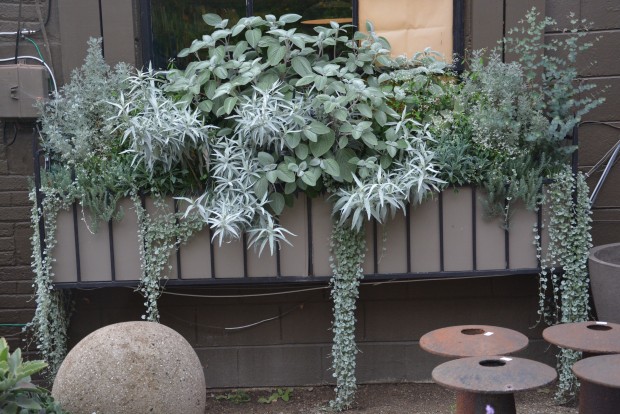 Some of the plants in my containers have moved past the thriving stage to the tired place. They have that pale foliage color that speaks to exhaustion. Some plants have gone limp from a summer’s worth of exertion growing. A week ago I cut back all of my nicotiana, and fed them. They have been lackluster all summer; I am hoping for a fall flush. The dahlias have not been happy this summer either. I am not sure if I will get a decent bloom before the mildew takes them down. My other containers are so root bound they need soaking, not just watering. The laurentia around the fountain grew too tall in the heat, turned yellow, and flopped over. I took them out. The fountain is turning green with algae, right on time, in time, for Labor Day.
Some of the plants in my containers have moved past the thriving stage to the tired place. They have that pale foliage color that speaks to exhaustion. Some plants have gone limp from a summer’s worth of exertion growing. A week ago I cut back all of my nicotiana, and fed them. They have been lackluster all summer; I am hoping for a fall flush. The dahlias have not been happy this summer either. I am not sure if I will get a decent bloom before the mildew takes them down. My other containers are so root bound they need soaking, not just watering. The laurentia around the fountain grew too tall in the heat, turned yellow, and flopped over. I took them out. The fountain is turning green with algae, right on time, in time, for Labor Day.
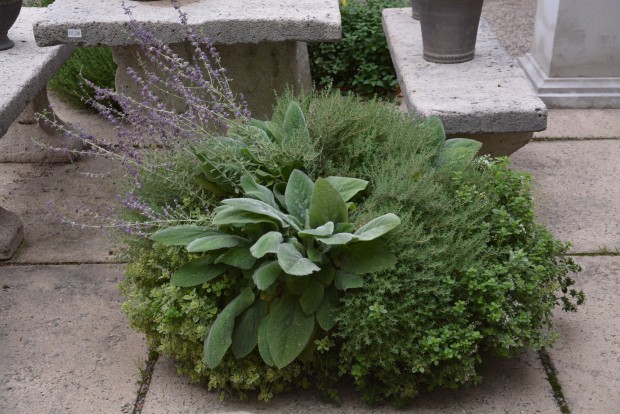 But there are plenty of containers which are right at what I call that “super nova” stage. Like a star that glows prior to imploding, they are at their most beautiful best – right now. They are as glowingly good as they ever will be. All of the plants have grown out, and matured. Each container has an overall shape-like it or not. Some plants have engulfed their containers. Rob’s container of Russian sage, lamb’s ear and several thyme varieties-any ideas about what the container looks like? Me neither. This planting, right now, is at its most glorious best. Our window boxes stuffed with silver foliaged plants are looking just about as good.
But there are plenty of containers which are right at what I call that “super nova” stage. Like a star that glows prior to imploding, they are at their most beautiful best – right now. They are as glowingly good as they ever will be. All of the plants have grown out, and matured. Each container has an overall shape-like it or not. Some plants have engulfed their containers. Rob’s container of Russian sage, lamb’s ear and several thyme varieties-any ideas about what the container looks like? Me neither. This planting, right now, is at its most glorious best. Our window boxes stuffed with silver foliaged plants are looking just about as good.
 These angel wing begonias are bowed over from the weight of all of their flowers. They have been beautiful all summer, but now they are at that very big and beautiful stage that foretells summer’s end.
These angel wing begonias are bowed over from the weight of all of their flowers. They have been beautiful all summer, but now they are at that very big and beautiful stage that foretells summer’s end.
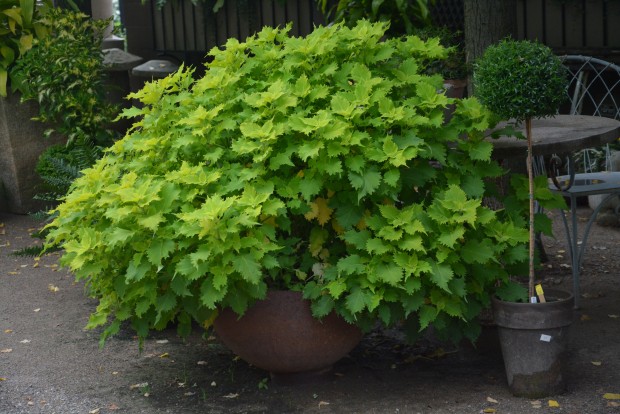 But no summer container plant can come close to that Labor Day super nova size like coleus. The range of colors and leaf types is astonishing. Their willingness to grow is unparalleled. I enjoy growing them, partly as it is possible to shape them by pinching. I find this entertaining. If you think I am a dull girl, you are probably right. This coleus Wasabi was grown from 3 4″ pots. Given a benevolent September, it will reach the ground. This pot I have not touched. All the joy in it has been watching it grow.
But no summer container plant can come close to that Labor Day super nova size like coleus. The range of colors and leaf types is astonishing. Their willingness to grow is unparalleled. I enjoy growing them, partly as it is possible to shape them by pinching. I find this entertaining. If you think I am a dull girl, you are probably right. This coleus Wasabi was grown from 3 4″ pots. Given a benevolent September, it will reach the ground. This pot I have not touched. All the joy in it has been watching it grow.
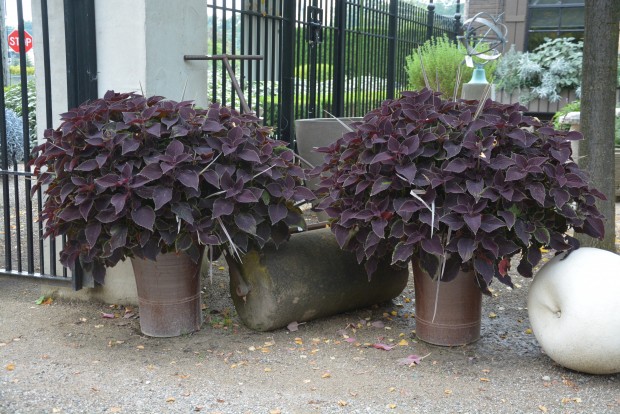 These chocolate coleus feature a brown and cream cordyline that is almost invisible now. Were you standing directly over them, you would see that I had pinched out the top to reveal the cordyline.
These chocolate coleus feature a brown and cream cordyline that is almost invisible now. Were you standing directly over them, you would see that I had pinched out the top to reveal the cordyline.
 This modestly sized Italian terra cotta rectangle is home to a hedge sized coleus. We pinched the bottom out, to give the impatiens some breathing room, and some light.
This modestly sized Italian terra cotta rectangle is home to a hedge sized coleus. We pinched the bottom out, to give the impatiens some breathing room, and some light. 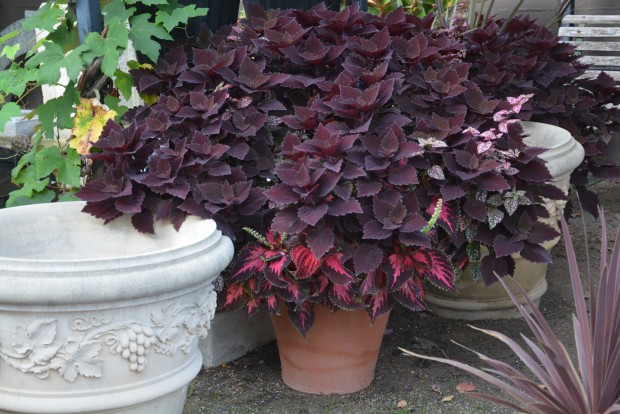 chocolate coleus, Kingwood Red coleus, and pink polka dot plant
chocolate coleus, Kingwood Red coleus, and pink polka dot plant
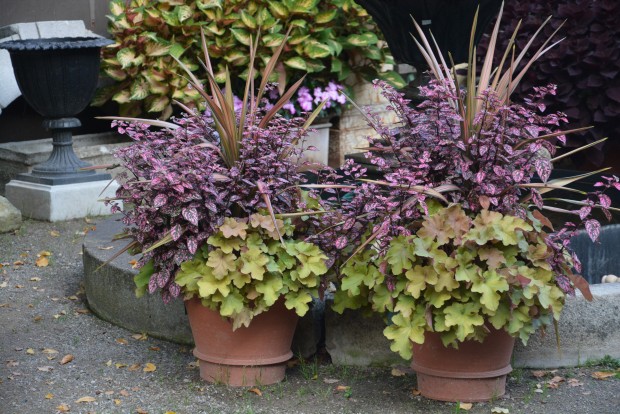 This pot with an orange and green phormium at the center, pink polka dot plant and heuchera bears no relation to coleus, except that it has been thriving in the same vein all summer.
This pot with an orange and green phormium at the center, pink polka dot plant and heuchera bears no relation to coleus, except that it has been thriving in the same vein all summer.
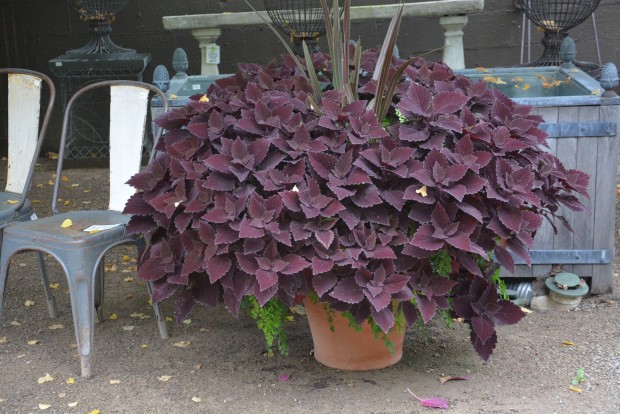 coleus peaking. the petticoat below-maidenhair fern.
coleus peaking. the petticoat below-maidenhair fern.
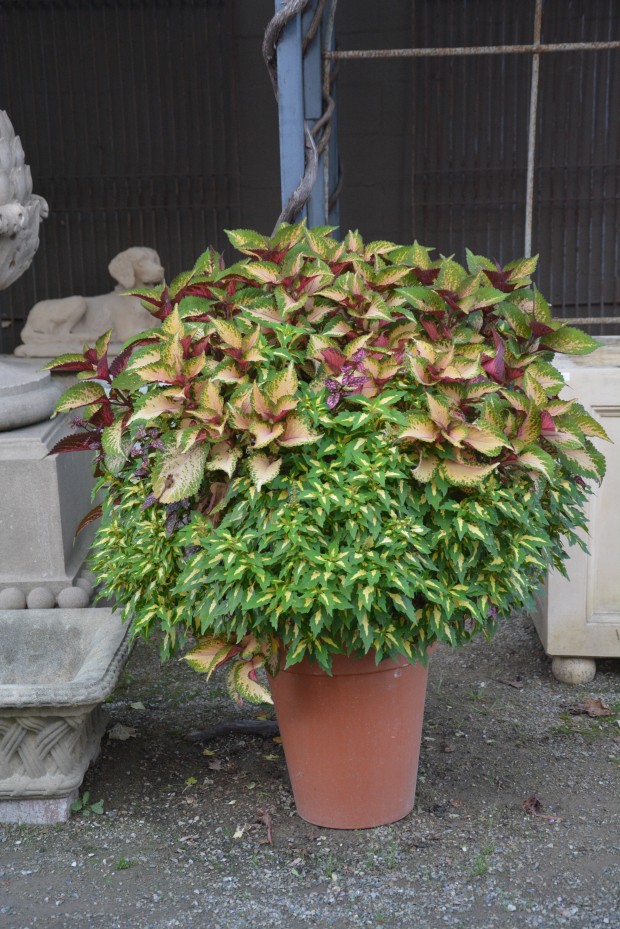 coleus Amora, coleus Alligator, and a subtle dash of pink polka dot
coleus Amora, coleus Alligator, and a subtle dash of pink polka dot
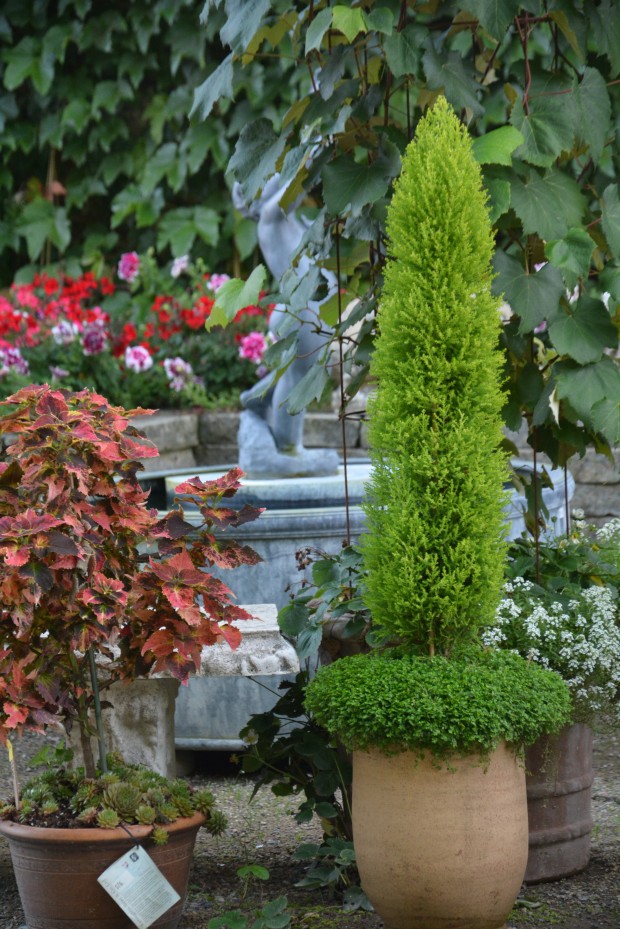 a coleus “Tilt a Whirl” standard, under planted with hens and chicks. The accompanying lemon cypress grown on from a 6″ pot-looking good.
a coleus “Tilt a Whirl” standard, under planted with hens and chicks. The accompanying lemon cypress grown on from a 6″ pot-looking good.
 So what am I thinking about this Labor Day? That Labor Day usually signals the start of the end of my summer gardening season, of course. But more importantly, that a working American gardener named Rob has gone the distance every day, day after day, since the middle of May to bring all of these container plantings along to this moment. If you live nearby, and haven’t seen them in person, they are well worth the trip. As for you, Rob, have a happy and well deserved Labor Day.
So what am I thinking about this Labor Day? That Labor Day usually signals the start of the end of my summer gardening season, of course. But more importantly, that a working American gardener named Rob has gone the distance every day, day after day, since the middle of May to bring all of these container plantings along to this moment. If you live nearby, and haven’t seen them in person, they are well worth the trip. As for you, Rob, have a happy and well deserved Labor Day.
